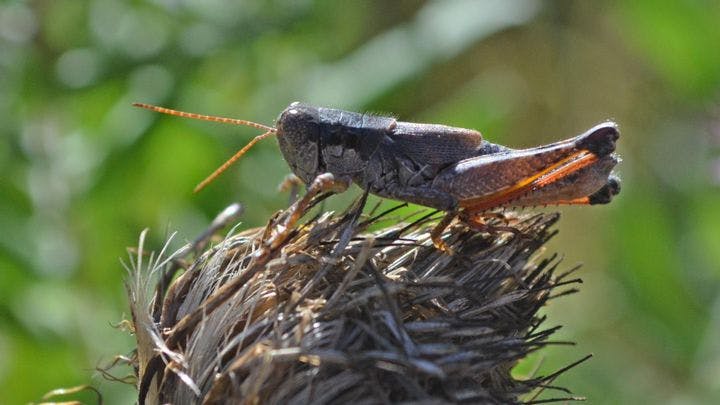Fall 2008
What Is 'Natural'?
– The Wilson Quarterly
A lesson in the ongoing struggle between man and nature, courtesy of Hawaii's gray bird grasshopper.
When master exterminators Jeffrey A. Lockwood and Alexandre V. Latchininsky were summoned to the remote Hawaiian island of Nihoa in 2006 to wipe out the invading gray bird grasshopper, they expected a straight pest management job. Two years earlier the insect had nearly denuded Nihoa, which lacks both fresh water and topsoil. The grasshopper, an interloper from Venezuela, had devoured 90 percent of the tiny volcanic island’s vegetation in a matter of months.
But Lockwood and Latchininsky landed smack in the middle of philosophical debates over the meaning of “native” and how aggressively to restore ecological “balance” when a newcomer arrives and decimates the local habitat. By the time the exterminators, who also teach at the University of Wyoming, arrived, Nihoa was again “impressively verdant.” All the native herbivores appeared to be doing well despite enduring a period of scorched-earth conditions, and the Nihoa millerbird, a species once on the edge of extinction, was thriving on a new grasshopper diet.
Hawaiian conservationists still insisted on turning the clock back to before 1977, when, they believed, the grasshoppers had stowed away on a freighter, ridden favorable winds to Nihoa, and lain low for a quarter-century waiting for the perfect combination of drought and heat to create the right conditions for them to multiply wildly and ravage their adopted paradise. But how far back should the clock be turned? At some point nearly every living thing on the 155-acre volcanic rock had also arrived as an immigrant. “Eliminating the grasshopper would presumably return Nihoa to an earlier state,” Lockwood and Latchininsky write, but which previous era was truly natural? When Nihoa was a steaming hunk of lifeless lava?
Ecologists focus on maintaining the integrity and stability of an environment, but the authors recognized an additional consideration that had come into play on Nihoa. The gray bird grasshopper was put on the hit list in part because it was considered biological litter, “offensive trash because of its cultural, religious, and literary associations with plagues and starvation.” The decision to eliminate it had a subjective element—the grasshopper was an odious species and deserved to go.
Lockwood and Latchininsky offered the grasshoppers poison-laced entrées of peanut butter and honey with molasses, but the pests rejected both; only innocent ants succumbed. Unable to come up with an alternative without intolerable collateral damage, the authors declined the contract.
Back at the University of Wyoming, where Lockwood teaches writing and philosophy and Latchininsky entomology, they drew a moral from their adventure: “The natural world will, given enough time, do just fine whether or not we tinker with all this preserving, restoring, and reclaiming.”
* * *
THE SOURCE: “Confessions of an Entomological Hit Man” by Jeffrey A. Lockwood and Alexandre V. Latchininsky, in Conservation Magazine, July–Sept. 2008.
Photo Flickr/Andy Reago and Chrissy McClarren
